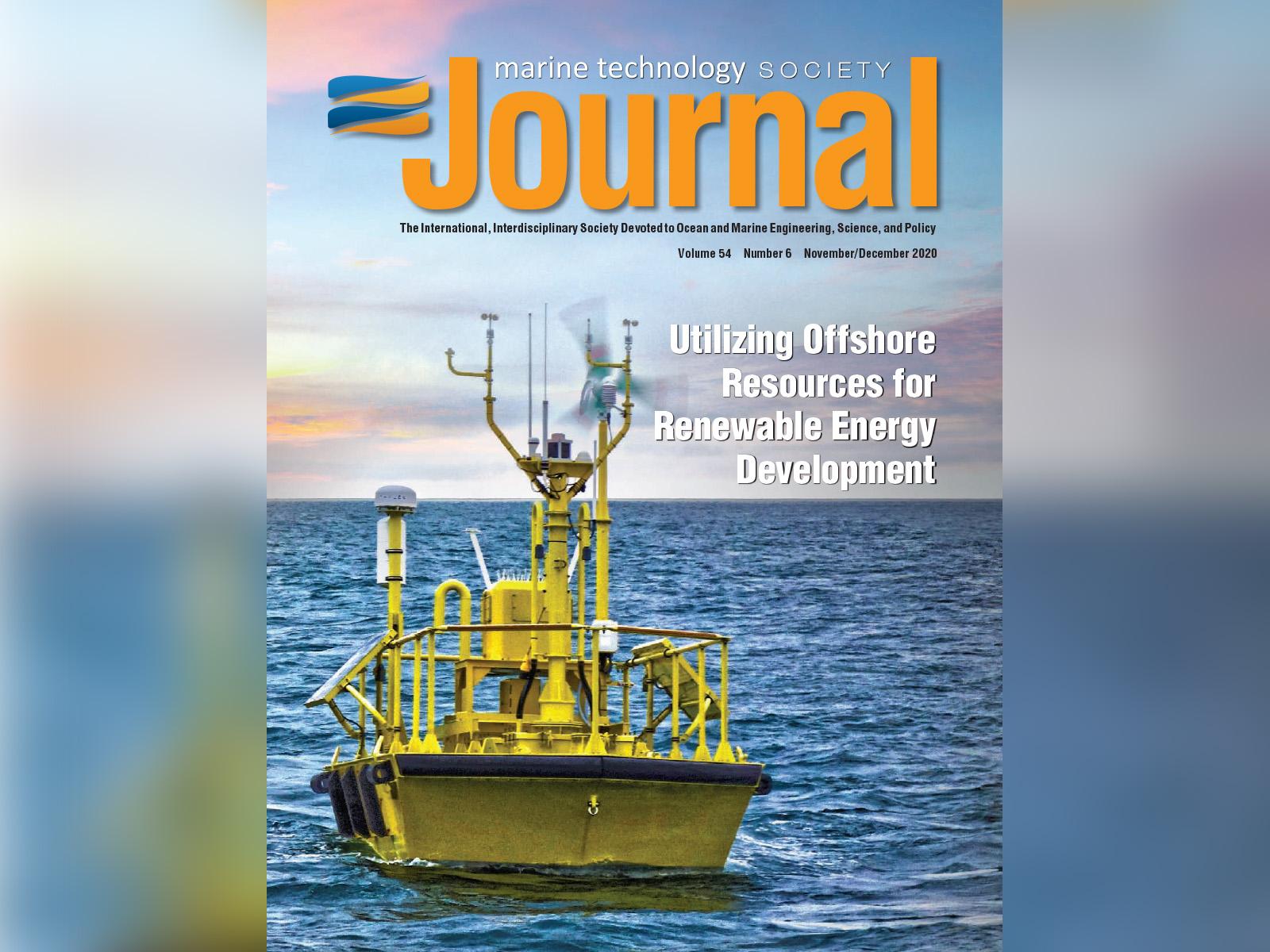By Susan Bauer
The ocean—waves on the water, currents beneath the surface, and winds above the water—offers a wealth of energy potential. In the United States, both marine renewable energy (MRE) and offshore wind energy (OSW) industries are still developing, but they hold significant promise as reliable forms of low-carbon energy that can benefit coastal communities and power the emerging Blue Economy—which refers to the sustainable use of ocean resources.
A special issue of the Marine Technology Society Journal, titled “Utilizing Offshore Resources for Renewable Energy Development,” focuses on research and development (R&D) efforts among industry, academia, and national laboratories, including Pacific Northwest National Laboratory (PNNL), that can help advance this renewable energy resource.
he issue was guest edited by Alicia Gorton, a project manager and ocean engineer at PNNL.
The research presented in this special issue demonstrates that transformative R&D is setting the stage for a brighter, cleaner and more secure energy future,” said Gorton. “Winds and waves have powered human endeavors since the dawn of time and now they are helping usher us into a greener, renewable energy future.”
In the foreword, Gorton and colleague Dorian Overhus note that a review of renewable energy technologies from 2010 to 2016 found that ocean energy received the least investment, highlighting a significant need for more R&D to accelerate innovation and commercialization in this field.
Meanwhile, ongoing research continues to reveal the resource potential in offshore winds, waves, tides, and currents in the United States, and other research is evaluating how to tackle potential challenges related to harvesting marine clean energy.
Marine clean energy resources
The special issue includes papers on resource potential and variability, measurement techniques, technologies to transmit data and energy to shore, models to evaluate risk to seabed dynamics, and in-water testing of MRE devices. One paper looks at wind energy potential in the Gulf of Mexico and how to optimize installations for lower average wind speeds there as well as hurricane resilience.
Two others look at variability of the Gulf Stream to inform development of MRE resources off Cape Hatteras, North Carolina, and at how certain techniques can set performance expectations and quantify wind variability at certain sites.
The journal’s cover story focuses on lidar systems mounted on buoys that measure wind speeds and other data at various relevant heights. Other papers discuss numerical modeling approaches to evaluate the risks of alterations to the seabed and sediment transport as a result of OSW development. Two papers describe testing of MRE infrastructure to evaluate new technologies for performance and potential environmental impacts. Another paper highlights an innovative mooring technology that facilitates power transmission and data transfer to support MRE and OSW development.
Powering the Blue Economy
One section of the special issue covers alternate uses of ocean energy sources to provide consistent, reliable power to the Blue Economy. To date, MRE development has focused on powering the electric grid, but a growing amount of work focuses on providing on-site power for maritime activities. One paper outlines how clean marine energy can power mobile and stationary platforms for ocean observing. Another paper looks at the use of ammonia for wave energy storage. Better energy storage at sea can power marine shipping and underwater vehicles, as well as provide seasonal energy storage for Arctic exploration.
Cybersecurity for marine clean energy
As with any connected operational technology, MRE and OSW power generation and transmission can be a target of cyberattacks and must assure robust cybersecurity. Two papers in the special issue focus on cybersecurity and what developers need to do to achieve cyber resilience for ocean power systems, be it wind or marine energy.
While the Marine Technology Society Journal requires a subscription to view the papers, you can learn more about offshore wind energy research and marine renewable energy research at PNNL. The majority of PNNL’s offshore energy portfolio is supported by the U.S. Department of Energy’s Office of Energy Efficiency and Renewable Energy and its Wind Energy Technologies Office and Water Power Technologies Office, along with the U.S. Department of the Interior’s Bureau of Ocean Energy Management.
